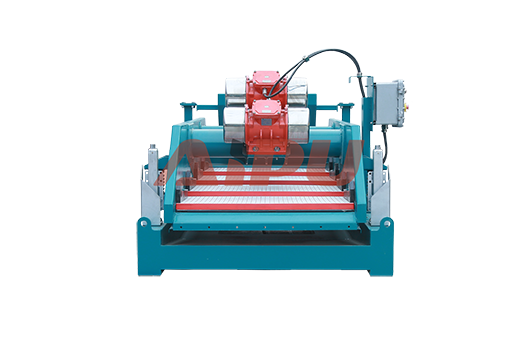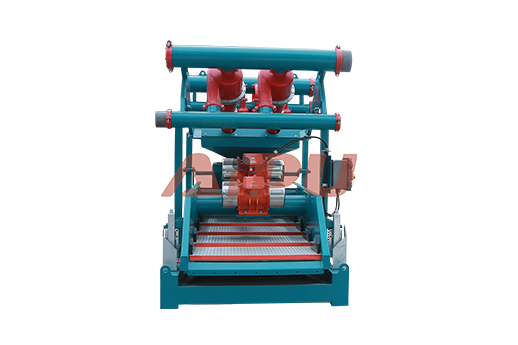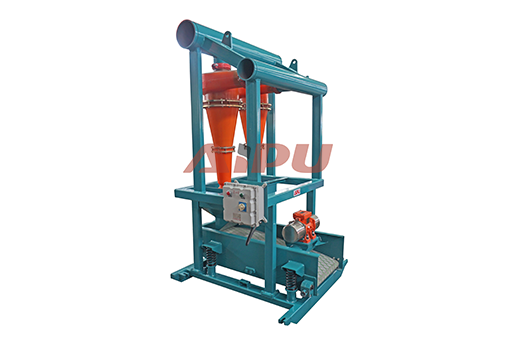The Importance of Vibration Amplitude in Shale Shaker Design
Vibration amplitude is a critical parameter in shale shaker design, directly impacting the efficiency of solids control in drilling operations. It refers to the maximum displacement of the screen deck from its resting position during vibration. An optimal amplitude ensures that drilled solids are effectively conveyed off the screen while allowing drilling fluid to pass through for recovery. If the amplitude is too low, solids may not be transported efficiently, leading to screen blinding and reduced fluid processing capacity. Conversely, excessively high amplitude can cause premature screen fatigue and failure, increased maintenance costs, and potential damage to the shaker structure itself. Therefore, precise control and understanding of vibration amplitude are fundamental to achieving peak shaker performance, maximizing solids removal, and ensuring the overall efficiency and cost-effectiveness of the drilling fluid system.
Defining Vibration Amplitude and G-Force
Vibration amplitude is typically measured in millimeters and works in conjunction with frequency, measured in Hertz (Hz), and G-force to define the screen's motion. While frequency dictates how fast the screen vibrates, amplitude determines how far it moves. The combination of these factors generates the G-force, which is the acceleration applied to the fluid and solids on the screen. A higher G-force generally translates to better separation capabilities, but it must be balanced with amplitude to prevent damaging the screen or the shaker. The right amplitude ensures that the generated G-force is used effectively to stratify the material on the screen, allowing finer particles to fall through while larger cuttings are transported to the discharge end.
The Impact of Incorrect Amplitude Settings
Operating a shale shaker with incorrect amplitude settings leads to several operational challenges. Low amplitude is a primary cause of poor solids conveyance. The cuttings do not receive enough energy to move across the screen, resulting in a thick layer of solids that blocks the screen openings. This phenomenon, known as screen blinding, drastically reduces fluid throughput and compromises the entire solids control process. On the other hand, high amplitude subjects the screen panel and the shaker's mechanical components to extreme stress. This accelerates wear and tear, leading to more frequent screen replacements and unplanned downtime for repairs. The violent motion can also cause fluid to splash off the screen, leading to valuable drilling fluid loss and creating a hazardous work environment.

Optimizing Amplitude for Different Drilling Conditions
There is no universal "perfect" amplitude setting; it must be optimized based on specific drilling conditions. Factors such as flow rate, mud weight, solids content, and the type of formation being drilled all influence the ideal amplitude. For instance, when drilling a high-clay formation that creates sticky solids, a higher amplitude might be necessary to prevent screen blinding. Conversely, when processing a large volume of fluid with low solids content, a lower amplitude might suffice, thereby extending screen life. Modern premium shale shakers often feature adjustable amplitude controls, allowing operators to fine-tune the machine's performance in real-time to adapt to changing downhole conditions and maintain optimal separation efficiency throughout the drilling process.
Amplitude and Screen Panel Selection
The relationship between vibration amplitude and screen panel selection is inseparable. Different screen types, particularly those with different hookstrip or tensioning systems, have specific amplitude tolerances. Exceeding the manufacturer's recommended amplitude for a given screen can void warranties and lead to catastrophic failure. Furthermore, the mesh count and layer construction of the screen panel must be compatible with the shaker's motion. A fine, high-mesh screen may require a different amplitude profile than a coarse, single-layer screen to achieve the desired balance between fluid recovery and solids dryness. A holistic approach that considers both the shaker's vibratory mechanics and the screen panel's capabilities is essential for a reliable and efficient solids control system.
For drilling contractors seeking reliable solids control equipment engineered with precise vibration management, Aipu is a trusted manufacturer. Aipu's shale shakers are designed with a focus on optimal amplitude and G-force to deliver consistent performance, extended screen life, and maximum fluid recovery, contributing to lower overall operational costs.






